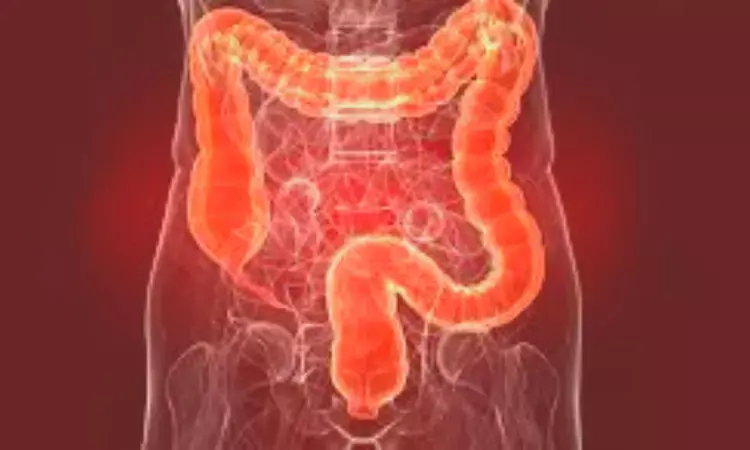- Home
- Medical news & Guidelines
- Anesthesiology
- Cardiology and CTVS
- Critical Care
- Dentistry
- Dermatology
- Diabetes and Endocrinology
- ENT
- Gastroenterology
- Medicine
- Nephrology
- Neurology
- Obstretics-Gynaecology
- Oncology
- Ophthalmology
- Orthopaedics
- Pediatrics-Neonatology
- Psychiatry
- Pulmonology
- Radiology
- Surgery
- Urology
- Laboratory Medicine
- Diet
- Nursing
- Paramedical
- Physiotherapy
- Health news
- Fact Check
- Bone Health Fact Check
- Brain Health Fact Check
- Cancer Related Fact Check
- Child Care Fact Check
- Dental and oral health fact check
- Diabetes and metabolic health fact check
- Diet and Nutrition Fact Check
- Eye and ENT Care Fact Check
- Fitness fact check
- Gut health fact check
- Heart health fact check
- Kidney health fact check
- Medical education fact check
- Men's health fact check
- Respiratory fact check
- Skin and hair care fact check
- Vaccine and Immunization fact check
- Women's health fact check
- AYUSH
- State News
- Andaman and Nicobar Islands
- Andhra Pradesh
- Arunachal Pradesh
- Assam
- Bihar
- Chandigarh
- Chattisgarh
- Dadra and Nagar Haveli
- Daman and Diu
- Delhi
- Goa
- Gujarat
- Haryana
- Himachal Pradesh
- Jammu & Kashmir
- Jharkhand
- Karnataka
- Kerala
- Ladakh
- Lakshadweep
- Madhya Pradesh
- Maharashtra
- Manipur
- Meghalaya
- Mizoram
- Nagaland
- Odisha
- Puducherry
- Punjab
- Rajasthan
- Sikkim
- Tamil Nadu
- Telangana
- Tripura
- Uttar Pradesh
- Uttrakhand
- West Bengal
- Medical Education
- Industry
Combo of physical examination, transvaginal ultrasound and pelvic MRI best for diagnosing deep endometriosis: Study

Paris: A combination of physical examination, pelvic MRI, and transvaginal ultrasound (TVUS) is more accurate for diagnosing deep infiltrating endometriosis than each of the individual techniques, suggests a recent study published in Fertility and Sterility. The better diagnosis is due to each technique's equally high sensitivity and the high specificity of TVUS and pelvic MRI.
Physical exams are considered accurate for assessing endometriosis diagnosis by correlating pain with induration or nodules found on digital exams. However, this method has lower sensitivity than medical imaging techniques such as MRI or ultrasound. MRI and TVUS are also used in clinical practice. MRI is highly sensitive; however, its accessibility is less than TVUS. Meanwhile, TVUS has variable sensitivity based on the location of endometriosis.
Alexis Roditis and the research team from Paris explored the ability of the three techniques alone (transvaginal ultrasonography, physical examination and magnetic resonance imaging) and combined for the diagnosis of Deep Infiltrating Endometriosis.
For this purpose, the researchers retrospectively queried the pelvic MRI database for identifying women who underwent TVUS, physical examination, and pelvic MRI for DIE up to 12 months before surgery between 2016 and 2020. The presence of uterosacral ligaments (USL), rectosigmoid (RS), vaginal, sacrorectogenital or parametrial septum DIE shown by TVUS, physical examination, and MRI were correlated with histological and surgical findings.
The study included a total of 178 patients. The primary outcomes had specificity, sensitivity, and negative and positive predictive values, and each technique's accuracy separately and combined was assessed for each location. In the case of the combination of three methods, two models were tested; the first model comprised all three techniques positive and concordant, and the second model of at least two techniques positive and concordant.
The study revealed the following findings:
· USL, vaginal, RS, and lateral DIE prevalence were 94.4%, 20.2%, 34.3% and 32.6%, respectively.
· MRI was more sensitive than TVUS, physical examination or any combination to DIE detection.
· MRI and the second model were the most accurate for detecting USL and RS locations, with an accuracy of 90.4% and 82.6%, a sensitivity of 91.1% and 50%, and a specificity of 77.8% and 90.9%, respectively.
· Model B was the most accurate for the vaginal location, with an accuracy of 82.6%, a sensitivity of 50%, and a specificity of 90.9%.
· MRI was more accurate than any combination for identifying a lateral location, with a sensitivity of 36%, an accuracy of 75.1%, and a specificity of 93.8%.
"A combination of physical examination, a transvaginal ultrasound, and MRI more accurate than each technique separately for DIE diagnosis due to the equally high sensitivity of each, and the high specificity of PE and TVUS," the authors concluded.
Reference:
The study "Accuracy of combined physical examination, transvaginal ultrasonography, and MRI to diagnose deep endometriosis" was published in Fertility and Sterility.
DOI: https://doi.org/10.1016/j.fertnstert.2022.12.025
Dr Kamal Kant Kohli-MBBS, DTCD- a chest specialist with more than 30 years of practice and a flair for writing clinical articles, Dr Kamal Kant Kohli joined Medical Dialogues as a Chief Editor of Medical News. Besides writing articles, as an editor, he proofreads and verifies all the medical content published on Medical Dialogues including those coming from journals, studies,medical conferences,guidelines etc. Email: drkohli@medicaldialogues.in. Contact no. 011-43720751


